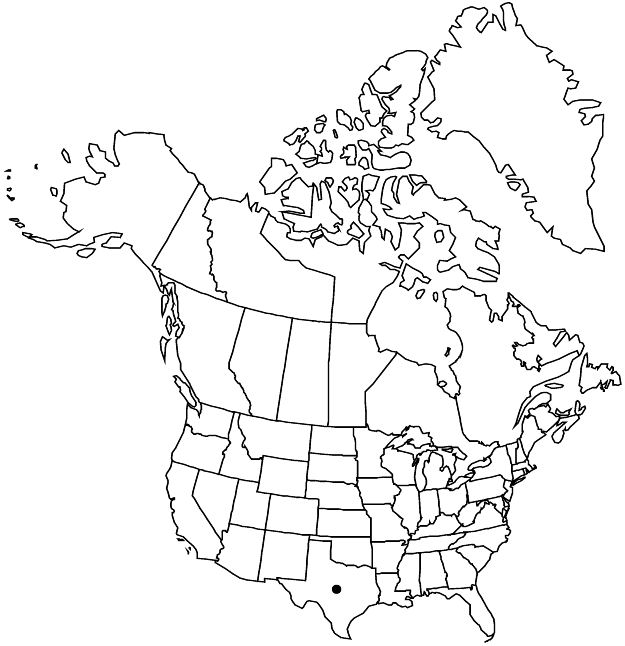Croton coryi
Bull. Torrey Bot. Club 69: 446, 457. 1942.
Herbs, annual, 5–10 dm, monoecious. Stems trichotomously branched, mostly densely, grayish white, long stellate-hairy. Leaves sometimes clustered near inflorescences; stipules absent; petiole 1.5–4 cm, glands absent at apex; blade narrowly ovate to elliptic, 3.5–7 × 1.5–3.5 cm, base rounded to subtruncate or subcordate, margins entire, apex acute, both surfaces light olive green, abaxial surface not appearing brown-dotted, no stellate hairs with brown centers, whitish stellate-hispid. Inflorescences bisexual, subspicate racemes, 4–7 cm, staminate flowers 15–25, pistillate flowers 8–15. Pedicels: staminate 0.5–2.5 mm, pistillate 0–3 mm. Staminate flowers: sepals 5, 3 mm, abaxial surface stellate-hairy; petals 5, ligulate, 3–3.5 mm, abaxial surface densely lepidote, scales translucent, petals appearing hyaline; stamens 14–16. Pistillate flowers: sepals 6–8, equal, 7 mm, margins entire, apex straight to slightly incurved, abaxial surface shaggy-tomentose; petals 0 or rudimentary; ovary 3-locular; styles 3, 3–4 mm, 2 times 2-fid, terminal segments 12. Capsules 4.5–5.5 × 4 mm, smooth; columella 3-angled. Seeds 3 × 2 mm, dull.
Phenology: Flowering May–Nov.
Habitat: Grasslands, woodland openings, deep well-drained sands, barrier island dunes, similar habitats inland.
Elevation: 0–50 m.
Discussion
Croton coryi is endemic to the South Texas Sand Sheet of coastal southern Texas (Brooks, Hidalgo, Jim Hogg, Kenedy, Kleberg, Nueces, Starr, and Willacy counties). Despite the marked difference in vegetative indumenta, C. coryi is closely related to C. argyranthemus. The most obvious feature linking them is the silvery lepidote staminate petals.
Selected References
None.
Lower Taxa
"connate" is not a number. "distinct" is not a number.
